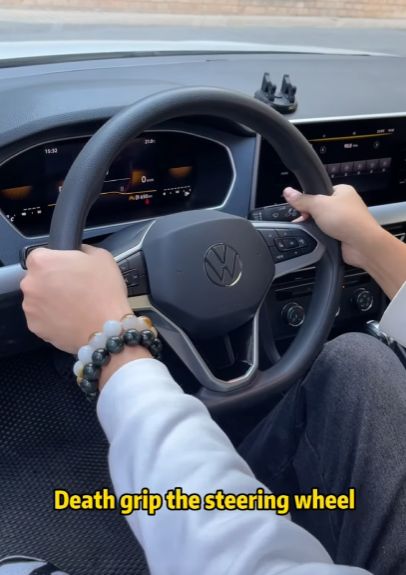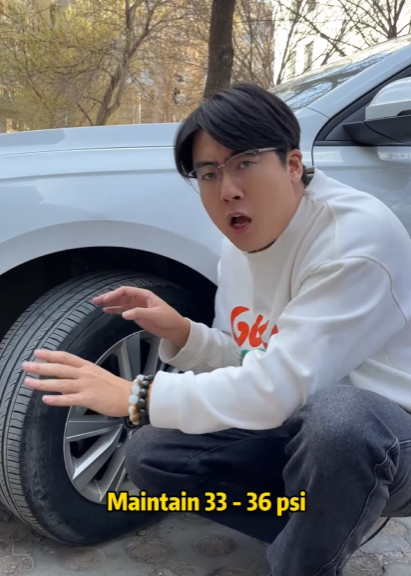
A car tire explosion is one of the most dangerous situations a driver can face on the road. It can happen suddenly and without warning, leading to a loss of control, severe accidents, or even life-threatening situations. Knowing how to handle a tire blowout safely can make a significant difference in ensuring your safety and that of other drivers. In this guide, we will explore what causes tire explosions, how to react when one occurs, and steps to prevent them in the future.

Understanding Tire Explosions
A tire explosion, or blowout, occurs when a tire rapidly loses air pressure due to structural failure. Unlike a slow puncture, where air leaks gradually, a blowout happens instantly and can cause the car to swerve violently.
Common causes of tire explosions include:
- Underinflation – Driving with low tire pressure can cause excessive flexing and overheating, leading to failure.
- Overloading – Carrying more weight than recommended puts extra stress on the tires.
- Tire Wear and Aging – Old or worn-out tires are more susceptible to blowouts.
- Road Hazards – Potholes, debris, and sharp objects can cause sudden damage to tires.
- Overheating – High temperatures can increase tire pressure beyond safe levels.
- Manufacturing Defects – Though rare, defective tires may have weak points that lead to explosions.

What to Do When a Tire Explodes While Driving
If you experience a tire blowout, it’s crucial to remain calm and follow these steps:
1. Keep a Firm Grip on the Steering Wheel
The first reaction to a blown tire should be to hold the steering wheel tightly. A sudden loss of a tire can cause the vehicle to pull strongly to one side. Avoid making sudden or excessive steering movements.
2. Do Not Slam on the Brakes
Braking immediately can cause the car to skid or spin out of control. Instead, take your foot off the accelerator and let the vehicle slow down gradually.
3. Maintain a Straight Path
Keep the car moving straight as much as possible. If the car veers to one side, make gentle corrections rather than sharp turns.
4. Slowly Reduce Speed
Let the car decelerate naturally. If needed, apply gentle pressure to the brakes once the vehicle has slowed to a safe speed.
5. Turn on Hazard Lights
Activating hazard lights alerts other drivers that you are experiencing an emergency and helps prevent further accidents.
6. Move to a Safe Location
Once the car slows to a manageable speed, steer toward the side of the road, an emergency lane, or a safe stopping area.
7. Do Not Stop in the Middle of the Road
If possible, avoid stopping in active traffic lanes. Try to reach a safe place before fully stopping.
8. Exit the Vehicle Safely
If you need to change the tire, exit carefully and use reflective warning triangles to alert other drivers.

How to Change a Tire After a Blowout
If you need to replace a blown tire, follow these steps:
1. Gather the Necessary Tools
- Spare tire
- Car jack
- Lug wrench
- Wheel wedges (if available)
- Flashlight (if it’s dark)
2. Secure the Vehicle
- Engage the parking brake.
- Place wheel wedges behind the tires to prevent rolling.
3. Loosen the Lug Nuts
Before lifting the car with the jack, slightly loosen the lug nuts by turning them counterclockwise.
4. Lift the Vehicle
Use the jack to raise the car until the damaged tire is off the ground.
5. Remove the Blown Tire
Unscrew the lug nuts completely and carefully remove the damaged tire.
6. Mount the Spare Tire
Align the spare tire with the wheel bolts and tighten the lug nuts by hand.
7. Lower the Car and Fully Tighten the Lug Nuts
Once the car is back on the ground, use the wrench to fully secure the lug nuts in a crisscross pattern.
8. Check Tire Pressure
Before driving, ensure the spare tire is properly inflated.
Preventing Tire Explosions
To reduce the risk of a tire blowout, follow these preventive measures:
1. Maintain Proper Tire Pressure
Check tire pressure at least once a month. Follow the manufacturer’s recommended PSI, usually found in the driver’s manual or on a sticker inside the driver’s door.
2. Inspect Tires Regularly
Look for signs of damage, such as cracks, bulges, or uneven wear. If you notice any issues, replace the tire immediately.
3. Rotate Tires Regularly
Rotating tires every 5,000-7,500 miles ensures even wear and extends their lifespan.
4. Avoid Overloading the Vehicle
Check the recommended load capacity in your car’s manual and avoid exceeding it.
5. Drive Cautiously on Rough Roads
Avoid potholes, curbs, and debris that could cause sudden tire damage.
6. Replace Old Tires
Tires generally last 5-6 years, even if they have good tread. Rubber weakens over time, increasing the risk of a blowout.
7. Be Cautious in Hot Weather
High temperatures can cause air expansion inside the tire. Check tire pressure before long trips in hot weather.
8. Use High-Quality Tires
Invest in reliable, high-quality tires from trusted brands. Cheap, low-quality tires are more likely to fail.

What to Do If You Don’t Have a Spare Tire?
If you experience a blowout and don’t have a spare tire, you have several options:
1. Use a Tire Repair Kit
Some vehicles come with a tire repair kit that includes sealant and an air compressor. These are temporary solutions until you can get a proper replacement.
2. Call Roadside Assistance
If you have roadside assistance coverage, call for help. They can bring a replacement tire or tow your vehicle to a service center.
3. Contact a Nearby Auto Shop
Use your phone to locate a nearby tire repair shop that can provide assistance.
4. Wait in a Safe Location
If you must wait for help, stay inside your vehicle with hazard lights on until assistance arrives.

Final Thoughts
A tire explosion is a frightening event, but knowing how to handle it can prevent a minor issue from becoming a serious accident. By staying calm, maintaining control of your vehicle, and taking preventive measures, you can reduce the risk of blowouts and drive safely. Regular tire maintenance, cautious driving habits, and having a spare tire or roadside assistance plan will ensure you’re prepared for any tire-related emergencies. Stay safe and keep your tires in good condition!



